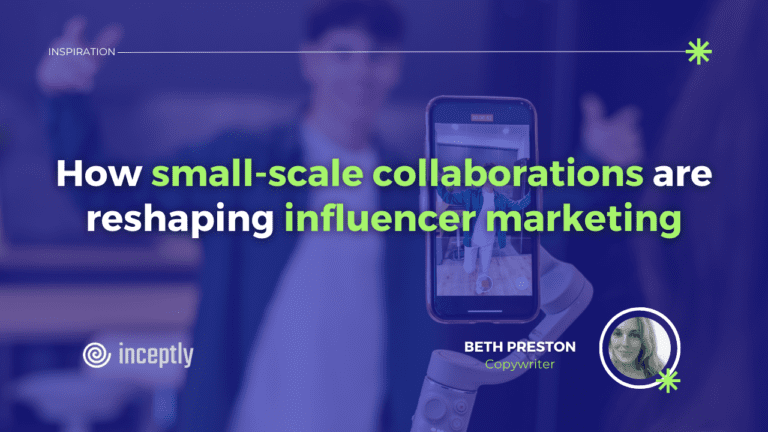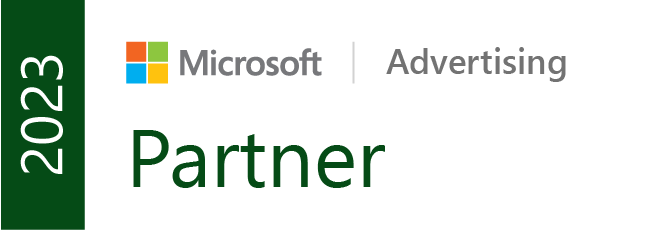
Imagine a world where your brand’s message spreads like wildfire, not through celebrity endorsements or flashy ads, but through genuine conversations between friends.
Welcome to the era of micro-influencers, where authenticity reigns supreme and engagement rates soar.
This article will equip you with the insights and strategies to harness the power of these small-scale content creators, potentially transforming your marketing approach and connecting with your audience in ways you never thought possible
Want to brainstorm with our team on new ways to scale your business with YouTube Ads (and other performance video platforms)?
Join us for a free YouTube ad brainstorming session👇
Prepare to discover why in the influencer world, sometimes less really is more.
The changing face of influencer marketing
Influencer marketing has become an integral part of many brands’ digital strategies, with global spending in this sector expected to reach $16.4 billion in 2022, according to Influencer Marketing Hub. However, as the industry has matured, marketers have begun to recognize the limitations and drawbacks of working exclusively with high-profile influencers and celebrities. This realization has paved the way for the rise of micro-influencers, typically defined as social media personalities with followers between around 10,000 and 100,000.
The appeal of micro-influencers lies in their ability to connect with niche audiences on a more personal level, often resulting in higher engagement rates and more authentic brand partnerships. As consumers become increasingly skeptical of traditional advertising and seek more genuine recommendations, micro-influencers have emerged as a powerful tool for brands looking to build trust and credibility with their target audience.
Reasons for the shift:
1) Higher engagement rates
One of the primary drivers behind the micro-influencer trend is the higher engagement rates these creators tend to generate. Studies have shown that as an influencer’s follower count increases, their engagement rate often decreases. According to a report by Influencer Marketing Hub, micro-influencers with 1,000 to 5,000 followers boast an average engagement rate of 8.8% on Instagram, compared to just 1.7% for those with over 100,000 followers.
This higher engagement can be attributed to the more intimate relationship micro-influencers have with their audience. Their followers often view them as peers or friends rather than distant celebrities, leading to more meaningful interactions and a greater likelihood of acting on recommendations.
2) Cost-effectiveness
Another significant factor driving the shift towards micro-influencers is the cost-effectiveness of these partnerships. While A-list celebrities and mega-influencers can command fees in the tens or hundreds of thousands of dollars for a single post, micro-influencers typically charge much more modest rates. This allows brands to spread their budget across multiple smaller collaborations, potentially reaching a more diverse and engaged audience.
For example, a study by Bloglovin’ found that 97% of micro-influencers charge less than $500 for a sponsored Instagram post, with many willing to create content in exchange for free products or experiences. This affordability enables brands of all sizes to participate in influencer marketing, democratizing the practice and opening up new opportunities for small and medium-sized businesses.
3) Authenticity and trust
In an era where consumers are increasingly wary of traditional advertising, authenticity has become a crucial factor in marketing success. Micro-influencers often have a more genuine connection with their audience, sharing personal experiences and recommendations that feel less scripted or forced than those of larger influencers or celebrities.
A survey by Expertvoice found that 82% of consumers are highly likely to follow a recommendation made by a micro-influencer, compared to 73% for an average person. This higher level of trust can translate into more effective brand partnerships and increased conversions for marketers.
4) Niche targeting
Micro-influencers often cater to specific niches or interests, allowing brands to target highly relevant audiences with precision. This targeted approach can be particularly valuable for brands operating in specialized markets or looking to reach specific demographic segments.
By partnering with micro-influencers who align closely with their brand values and target audience, companies can ensure their message reaches the right people in a context that feels natural and authentic.
5) Flexibility and creativity
Working with micro-influencers often allows for greater flexibility and creativity in campaign execution. These creators are typically more open to collaboration and willing to experiment with different content formats or ideas. This flexibility can lead to more innovative and engaging campaigns.
Real-life examples of successful micro-influencer campaigns
1) Daniel Wellington
The Swedish watch brand Daniel Wellington has become synonymous with successful micro-influencer marketing. By partnering with thousands of micro-influencers across various niches, the company has built a strong social media presence and achieved significant growth. Their strategy involves sending free watches to influencers in exchange for posts featuring the product, often accompanied by a unique discount code for followers.
This approach has allowed Daniel Wellington to reach diverse audiences and create a sense of exclusivity around their brand. The company’s Instagram following grew from 850,000 to 2.1 million in just one year, demonstrating the power of micro-influencer collaborations at scale.
2) Sperry
Footwear brand Sperry leveraged micro-influencers to reinvigorate their image and connect with a younger audience. They identified 100 micro-influencers on Instagram who were already fans of the brand and invited them to create content for Sperry’s social media channels. This strategy allowed the brand to tap into authentic, user-generated content while reaching new audiences through the influencers’ networks.
The campaign resulted in a significant increase in engagement on Sperry’s social media accounts and helped shift perceptions of the brand among younger consumers.
2) Glossier
Beauty brand Glossier has built its entire marketing strategy around micro-influencers and user-generated content. By cultivating a community of passionate customers and micro-influencers, Glossier has created a powerful word-of-mouth marketing engine. The brand regularly features content from its customers and micro-influencers on its social media channels and website, fostering a sense of authenticity and inclusivity.
This approach has helped Glossier achieve rapid growth and a loyal customer base, with the company reaching unicorn status (a valuation of over $1 billion) in 2019.
Key takeaways and lessons learned:
1. Quality over quantity: When working with micro-influencers, focus on finding creators whose values and audience align closely with your brand, rather than simply chasing follower numbers.
2. Authenticity is key: Encourage micro-influencers to create content that feels genuine and aligns with their usual style, rather than pushing for overly scripted or promotional posts.
3. Long-term relationships: Consider building ongoing partnerships with micro-influencers rather than one-off collaborations. This can lead to more authentic content and stronger brand advocacy over time.
4. Diversify your approach: Don’t rely on a single micro-influencer; instead, spread your efforts across multiple creators to reach a wider audience and mitigate risk.
5. Measure and optimize: Track the performance of your micro-influencer campaigns using relevant metrics such as engagement rates, click-throughs, and conversions. Use this data to refine your strategy and identify your most effective partnerships.
6. Empower creativity: Give micro-influencers creative freedom within your campaign guidelines. Their unique perspective and understanding of their audience can lead to more engaging and effective content.
7. Consider micro-influencer networks: Explore platforms and agencies that specialize in connecting brands with micro-influencers to streamline the process of finding and managing partnerships.
The micro-influencer phenomenon isn’t just a fleeting trend; it’s reshaping the entire influencer marketing landscape. These nimble content creators are proving that you don’t need millions of followers to make a significant impact. By embracing authenticity, fostering genuine connections, and targeting niche audiences, micro-influencers are writing a new chapter in the marketing playbook.
For brands willing to adapt, the opportunities are boundless. It’s time to recalibrate your influencer strategy, focusing on quality over quantity, and authenticity over reach. The future of influencer marketing lies not in the hands of a few celebrities, but in the collective power of countless passionate individuals sharing what they love.
So, as you plan your next campaign, remember: in the world of influence, sometimes the smallest voices carry the furthest.
Are you ready to amplify them?
Want to brainstorm with our team on new ways to scale your business with YouTube Ads (and other performance video platforms)?
Join us for a free YouTube ad brainstorming session👇
Want more content like this?
Don’t miss out on the latest news and updates from the world of Direct Response advertising! Subscribe to our newsletter today 👇

Beth Preston, Copywriter
Beth is a rising star on our copywriting team. She always brings her A-game to the table, delivering a fresh perspective and incredible converting copy for our clients.
Like this post? Let's continue the conversation!
Get in touch with us by shooting us a quick email or tagging us on LinkedIn or Instagram, and sharing your thoughts. Your feedback helps us keep our blog relevant and interesting.
Get Our Newsletter
Need Help?
Get in touch with us for an insightful evaluation of your ads + actionable tips to help amp up your direct response revenue






